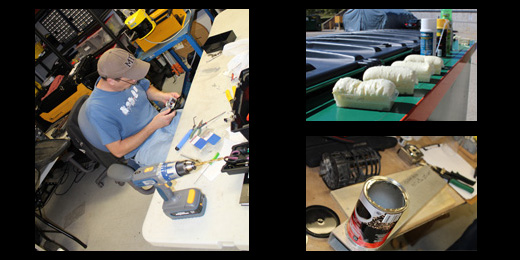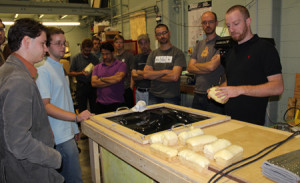Last week was our first official “hardware hack day” at Clearpath, and what a day it was! We’ve done a few software hack days over the year, but we’re excited to share about this one in particular since hardware hack days are typically much harder to plan.
First things first
We make sure the whole team knows exactly what’s going on. Here are the general guidelines for any of our hack days:
1. They’re one day long (not overnight, 24 hour or 48 hour “hackathons” – all-nighters aren’t a part of our culture)
2. Food is provided
3. All non-participants, like project managers, salespeople, other engineers, are given a heads-up (or warned) ahead of time, and any urgent requests are handled by one key contact, typically the CTO
4. The goal is to learn as much as possible and for the Company, as a whole, to get a better understanding of new technologies and processes
Hardware = Harder
Hardware adds new challenges to the hack day mix: there’s no revert option, there’s no undo, the “build process” can be lengthy, the tools are less readily at hand, and if you’re buying something off the shelf, you might have to wait a few weeks. With all of this in mind, this is what we did to prep:
1. Set a parts budget for the day. For this one, it was $1,000
2. Discuss possible ideas a month before the event
3. After the brainstorm, we selected 3-4 hacks. This selection was mainly based on the interests and skills of people who were able to “attend”. For example, since our software team wasn’t involved in this one, we put off any ideas which needed new code.
4. Split into small teams, one team per hack. Each team came up with rough designs ahead of time and bought any parts we didn’t have on the shelf.
Most of the actual designing and concepting is done during free time in the weeks leading up to the hack day. The building and testing happens in a single day. We met once in the morning to kick things off, discussed progress over a group lunch, and then did a final review and retrospective at the end of the day. The following day, participants presented their results to the whole Clearpath team at an informal standup.
What was accomplished?
We wound up with a de-facto theme of “new manufacturing processes.” We’re very comfortable with bending, welding, and otherwise working with metal, but we’d like to gain some experience with other construction techniques before we commit to including them in a new product. This was a great way to try some of these techniques out.
In the span of a day, seven team members built a foam wire cutter, experimented with plastic casting, studied the properties of expanding foam, and built a vacuum forming machine. We even used the vacuum-former to build a few molds for the plastic casts.
Not only was it a fun and relaxing change from the spec-driven design world we live in, we also learned a lot of new things that we’ll be able to apply to future products.
The next step: Figure out where to put the new vacuum former…




